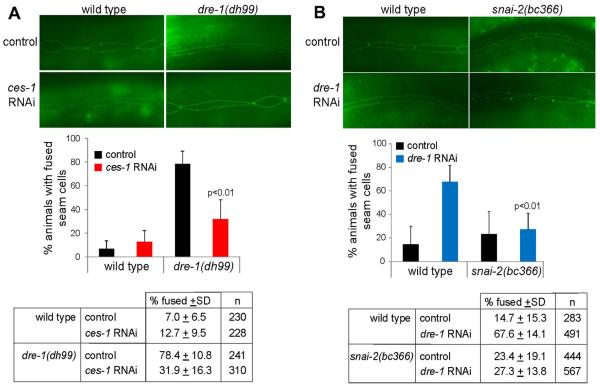Fig. 8. ces-1 depletion or snai-2 mutation suppresses the seam cell fusion phenotype of reduced dre-1 in C. elegans.
(A) Precocious seam cell fusion in dre-1(dh99) L3 larvae is suppressed by ces-1 RNAi. (top) Images of seam cell adherence junctions in the L3 molt as visualized by the ajm-1::gfp reporter. Wild type seam cells were unfused on control RNAi (empty vector L4440) or ces-1 RNAi. dre-1(dh99) seam cells were precociously fused on control RNAi but showed rescue of this phenotype on ces-1 RNAi. Worms were scored fused if more than 80% of cells were fused. Significance was determined using the Student-T-test. Data are the mean + the standard deviation (SD) from 5 independent experiments.
(B) Precocious seam cell fusion caused by dre-1 RNAi in L3 larvae is suppressed by the snai-2(bc366) allele. (top) Images of seam cell adherence junctions in the L3 molt as visualized by the ajm-1::gfp reporter. Seam cells are mostly unfused in wild type or K02D7.2/snai-2(bc366) on control RNAi (empty vector L4440). dre-1 RNAi causes precocious seam cell fusion at the L3 molt in the wild type strain but not in the snai-2(bc366) mutant, indicating a suppression by snai-2. Data in histogram are the mean + SD from 3 independent experiments.

